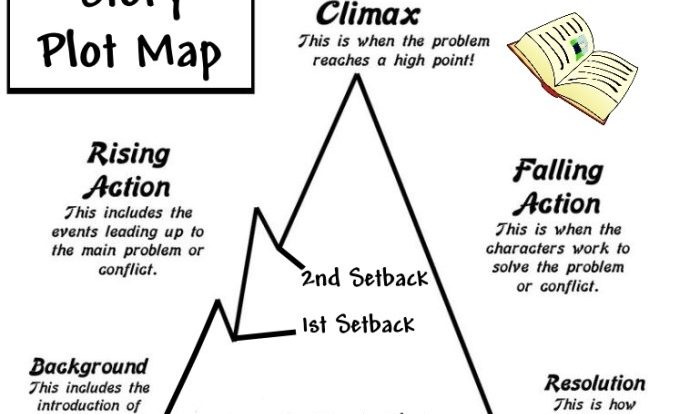Day of the butterfly by alice munro – As “Day of the Butterfly” by Alice Munro takes center stage, this opening passage beckons readers into a world crafted with intricate detail and profound insight, ensuring a reading experience that is both captivating and distinctly original.
This literary masterpiece delves into the complexities of human relationships, the power of memory, and the transformative nature of loss. Through the eyes of its unforgettable characters, Munro paints a vivid portrait of a family grappling with the challenges of life, love, and the inevitable passage of time.
Plot and Structure
In “Day of the Butterfly,” Alice Munro weaves a poignant tale of loss, memory, and the enduring power of nature. The story follows a nameless narrator as she grapples with the recent death of her beloved husband.
Main Storyline
The main storyline unfolds as the narrator recounts a specific day, a “day of the butterfly,” that occurred during her husband’s final illness. On this day, she observes a butterfly fluttering in the garden, a symbol of both life and mortality.
Use of Flashbacks, Day of the butterfly by alice munro
Munro employs flashbacks to delve into the narrator’s past, offering glimpses into her marriage, her childhood, and her relationship with her husband. These flashbacks provide context for the narrator’s present emotions and illuminate the profound bond she shared with her partner.
Significance of Butterfly Symbolism
The butterfly, a recurring motif throughout the story, symbolizes the ephemeral nature of life and the interconnectedness of all living things. Its presence evokes a sense of both joy and sorrow, reminding the narrator of the beauty and fragility of her husband’s life.
Characters and Relationships

The story of “Day of the Butterfly” revolves around several key characters and their intricate relationships. These characters are deeply affected by their motivations, conflicts, and the bonds they share with one another.
The protagonist, Sheila, is a young woman who has returned to her hometown after spending several years away. She is grappling with the challenges of reconnecting with her family and navigating the complexities of her own identity. Her motivations stem from a desire for belonging and acceptance, as well as a longing to understand her past.
Sheila’s relationship with her mother, Jean, is central to the story. Jean is a complex and enigmatic character who has struggled with mental illness throughout her life. Sheila’s love for her mother is tempered by her frustration and confusion over Jean’s erratic behavior.
As the story unfolds, Sheila must confront her own feelings towards her mother and come to terms with the impact of her illness on their relationship.
Family and Memory
Family and memory play a pivotal role in shaping the characters’ identities and relationships. Sheila’s return home forces her to confront her family’s past and the secrets that have been kept from her. Through flashbacks and fragmented memories, she gradually pieces together the truth about her mother’s illness and its devastating effects on her family.
The story explores the ways in which family history can both bind and divide individuals. Sheila’s relationship with her brother, Harry, is strained by their different perspectives on the past and their conflicting memories of their mother. As Sheila delves deeper into her family’s history, she must navigate the complexities of memory and its ability to both heal and wound.
Themes and Symbolism
Alice Munro’s “Day of the Butterfly” explores profound themes of transformation, renewal, and the cyclical nature of life. The story’s rich use of symbolism, imagery, and metaphors enhances these themes, particularly through the symbolic representation of the butterfly.
Butterfly as Symbol of Transformation
The butterfly serves as a potent symbol of transformation and renewal. Its metamorphosis from a caterpillar to a vibrant butterfly mirrors the protagonist Florence’s journey of self-discovery and growth. The butterfly’s emergence represents the possibility of rebirth and the shedding of past limitations.
Imagery of Light and Shadow
Munro employs imagery of light and shadow to convey the contrasting emotions and experiences in the story. The bright sunlight of the summer day symbolizes happiness and hope, while the shadows cast by the trees represent moments of doubt and uncertainty.
The interplay of light and shadow reflects the cyclical nature of life, where joy and sorrow are intertwined.
Metaphors of Flight and Captivity
Munro uses metaphors of flight and captivity to explore themes of freedom and constraint. The butterfly’s ability to fly symbolizes Florence’s longing for independence and her desire to break free from societal expectations. Conversely, the caterpillar’s confinement within the cocoon represents her feelings of being trapped and unable to express her true self.
Setting and Atmosphere
The setting of “Day of the Butterfly” is a small town in rural Ontario, Canada, during the early 20th century. The story’s atmosphere is characterized by a sense of nostalgia, loss, and regret.
Munro’s use of sensory details and imagery creates a vivid and immersive atmosphere. The sights, sounds, smells, and textures of the town are described in rich detail, bringing the setting to life. For example, the narrator describes the “smell of lilacs and apple blossoms” and the “sound of birds singing in the trees.”
These sensory details help to create a sense of place and time, and they also evoke a sense of longing for the past.
The setting of the story also influences the characters’ experiences and actions. The small town is a place where everyone knows everyone else, and secrets are difficult to keep. This sense of community can be both comforting and stifling, and it shapes the choices that the characters make.
For example, the narrator’s mother is afraid to leave her husband, even though she is unhappy in her marriage. She is afraid of what people will say, and she is afraid of being alone.
Narrative Techniques: Day Of The Butterfly By Alice Munro
Alice Munro employs a range of narrative techniques in “Day of the Butterfly” to enhance the reader’s understanding and interpretation of the story. These techniques include stream of consciousness, flashbacks, and foreshadowing.
Stream of Consciousness
Munro uses stream of consciousness to present the thoughts and feelings of her characters directly, without filtering or interpretation. This technique allows the reader to enter the minds of the characters and experience their emotions and perspectives firsthand. In “Day of the Butterfly,” stream of consciousness is used to reveal the complex inner lives of the main characters, particularly Carla.
Flashbacks
Munro uses flashbacks to provide context and backstory for the present events of the story. These flashbacks allow the reader to understand the characters’ motivations and actions in greater depth. In “Day of the Butterfly,” flashbacks are used to reveal Carla’s childhood experiences and her relationship with her parents.
Foreshadowing
Munro uses foreshadowing to hint at events that will occur later in the story. These hints create a sense of suspense and anticipation for the reader. In “Day of the Butterfly,” foreshadowing is used to suggest the tragic events that will befall Carla and her family.
Munro’s writing style is characterized by its simplicity, precision, and evocative imagery. She uses language to create a vivid and immersive experience for the reader, drawing them into the world of her characters. The combination of narrative techniques and writing style contributes to the overall impact of “Day of the Butterfly,” making it a powerful and moving story.
FAQ Guide
What is the main theme of “Day of the Butterfly”?
The main theme of “Day of the Butterfly” is the transformative nature of loss and the enduring power of memory.
How does Munro use symbolism in the story?
Munro uses the butterfly as a symbol of transformation and renewal, and the garden as a symbol of both beauty and decay.
What is the significance of the ending of the story?
The ending of the story suggests that the characters have come to terms with their loss and are able to move forward with their lives.

